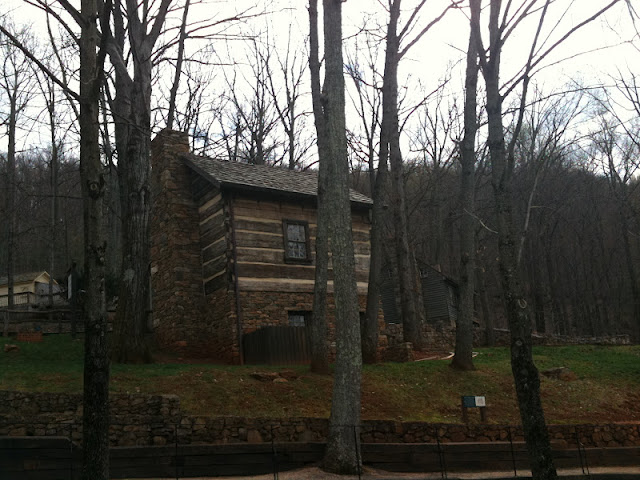Oh, how I wish I had a photograph of Granny Beth's face when I said the word, "tavern." You would have thought I had said "brothel!" Well, I'm gratified that she was shocked at me for suggesting it - means she trusts that I would never go to a bar... I was so engrossed in clearing up the misunderstanding that I forgot all about photos!
"No, no!" I told her. "It's not THAT kind of tavern! Back during colonial times a tavern was a one-stop does all place. You ate there, you got rooms there, you could probably even buy goods there - along with the mugs of ale and whiskey. But, trust me, we won't be buying any whiskey!!"
She looked a bit relieved, but I knew she would bolt back to the car if it turned out to be any different than what I had said.
When we pulled up, John's sister-in-law, Sharon, hopped out to kind of get a feel for the price and menu. She spoke with someone in period costume, checked the posted menu, and waved us in. "The Ordinary," on the right-hand side of the tavern, is where the "Keeping Hall" is. I suppose it got it's name because that's where one goes to keep from starving to death and "keep" body and soul together ?
This is John's nephew, and no, the doorway wasn't that short, it's just that his nephew is that tall!
From the outside, the tavern looks pretty modern, but once you're inside it's easy to tell it's been around for a long, long time - since 1784. (Now, I know for our international readers that that date isn't so very old - but for us in the U.S., it is!)
The meal was all you can eat, absolutely delicious, served on pewter plates, and drinks were served in pewter mugs, with hot peach cobbler for desert - all for about $15 per person. Even Granny Beth was pleased. (Whew!)
Once outside there's a whole little village of things to see - at no cost! There is a metal smith, a clothier's, the General Store, and the ever-present museum shop... Definitely worth the stop!
It was a fun little bonus to our trip to Monticello.

















































